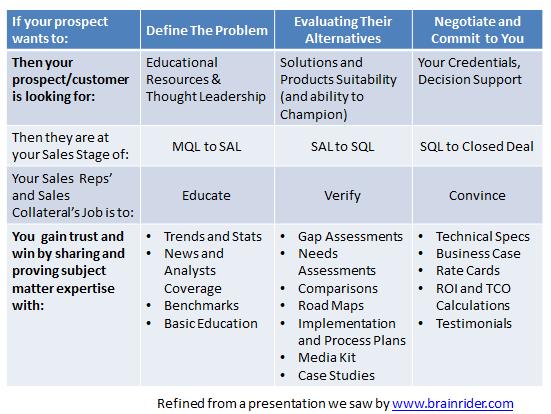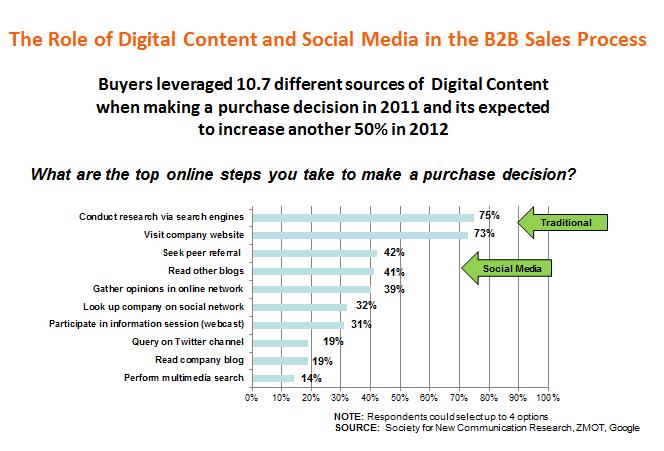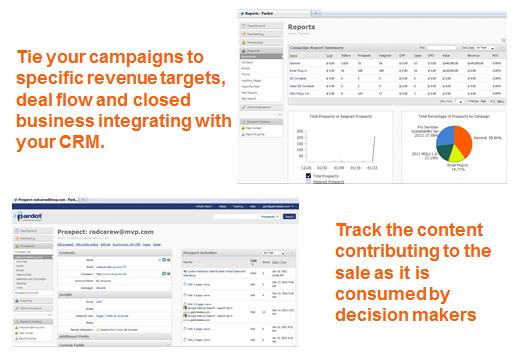
5 Steps to Launch or Turn Around a B to B Demand Gen Team

How a B to B sales team can accelerate education, verification, and convincing of potential prospects.
In Part One we discussed the difference between “Sales” Content Marketing and Marketing. In Part Two we covered the framework we use to listen to the customer. This blog is Part Three of that three part series. It discusses how you can approach creating a successful B to B Demand Generation Outsourcing Solution in a systematic and cost effective way.
To summarize: in B2B Sales and B2B Content Marketing – the Sales Conversation, the Digital Conversation and the Social Media Conversation should and need to be the same conversation. Sales and Marketing have the same job with different methods of delivery. Below is our best practice road map for scaling that conversation. As an outsourced b to b demand generation company we recommend the following five steps in the following order:
- Have your B2B demand gen team listen to the customer and provide feedback to sales marketing team.
- Have your “sales” content marketing team create inexpensive digital content that pushes the deals forward and do some small direct marketing tests.
- Have your senior sales reps close those deals to prove concept.
- Have your demand generation team, sales operations, or marketing operations team implement a Marketing Automation Platform to score your content and give sales and marketing a shared sales quota.
- Once you have the ability to score leads and content (and digital content that works and is market tested) give it to your “Marketing” team to scale.
As discussed in Parts 1 and 2, when clients engage with Gabriel Sales in a new product launch or a demand generation campaign our two primary objectives are:
- Fill the sales pipe
- Move deals from Marketing Qualified to Sales Qualified
As a sales outsourcing company our objective is to:
- Close business
As a value add we also function as an outsourced sales marketing company and our objectives are to:
- Test assumptions about ideal target markets to find verticals that will scale
- Craft the right messages and scripts that will help move those deals through the pipe faster in that market
- Create the right digital content and establish the right marketing platforms to support moving a deal from marketing qualified to sale qualified with increased volume.
- Track the b to b digital content’s contribution to a sale by implementing a Marketing Automation Platform (for full disclosure we are a Denver CO Pardot Partner).
This type of roll out, team organization and team orientation drives tremendous accountability. Your sales team needs to document the “Sales Conversation” and provide that feedback to marketing. Your “sales” marketing team is responsible for helping sales create content that closes business. With this simple approach you are focused on filling your pipe, closing business and driving intelligence that closes more business.
Where this alignment really pays off long term is the exponential lift and efficient spends you get out of your “Marketing” Teams – both internal and your agencies. Your external teams may include Direct Marketing, Media Buyers, Publishers, and Social Media Agencies. When executed in the right order:
Your B to B demand generation team’s marketing alignment job is to map the “Sales Conversation” and provide inputs to sales marketing about what the customer wants and needs to discuss:
Your “sales” marketing team’s job is provide content that helps your customer get the right information at the right time in the “Digital Content Conversation”:
 Your designated sales or marketing operations team job is to implement a platform like Pardot to Automate and Score Conversations.
Your designated sales or marketing operations team job is to implement a platform like Pardot to Automate and Score Conversations.
With Sales, B to B Demand Generation, Sales Marketing and Sales Operations teams aligned, your marketing teams’ job, (your creative agency, your media buyers and your publishers) is to take that “Sales Conversation” to the masses. It’s their job to turn the “Sales Conversation” and “Digital Conversation” into a “Social Media Conversation” to ramp the volume of the pipe.
 As the conversation merges across all functions this approach is just common sense. When you get it right digital strategy in place it can drive large chunks of the sales cycle. Of course the options you have still remain the same but we feel that the new rules of sales engagement dictate that your sales team becomes more active in the marketing function because it results in more deals, faster at less upfront sunk costs.
As the conversation merges across all functions this approach is just common sense. When you get it right digital strategy in place it can drive large chunks of the sales cycle. Of course the options you have still remain the same but we feel that the new rules of sales engagement dictate that your sales team becomes more active in the marketing function because it results in more deals, faster at less upfront sunk costs.
- You can pay an MR firm for an MR study or listen to your sales team as they to listen to the customer and fill the pipe at the same time.
- You can pay a creative agency to guess at what content the market wants. Or you can have an integrated sales content team and inside sales team. You can test that initial content and then pass those insights on to the creative agency to improve and polish
- You can have a publisher create a white paper for you or you can test a series of blogs that address your customers top objections and then have the publisher write that white paper (this is what major film studios do now…they test on YouTube before they green light a film project or TV pilot).
- You can have a direct marketing team drive traffic across multiple sources and platforms. Or you can get input of your sales to run AB tests so when you make that spend your opens and your conversions are stellar.
One solution we would recommend running in parallel if the budget permits is working with a social media analytics company to start mapping the social media conversation so you can map this to the sales conversation and prepare for outreach.
We hope you enjoyed this series. A year ago we were skeptical that “content is king”. That’s no longer the case. Once we experimented and attached hard metrics to digital content we were blown away by the results. We would love to share those learning with you. If you have any questions about any of our road maps or frameworks please don’t hesitate to give us a call. To see if a sales driven demand generation and sales content marketing effort may be valuable in helping you to increase your revenue and decrease your demand generation costs CONTACT US.
To read Part 1 Top B to B Demand Generation Requires Sales Content Marketing CLICK HERE.
To read Part 2 Top B to B Demand Generation Requires Sales and Marketing Alignment CLICK HERE.



